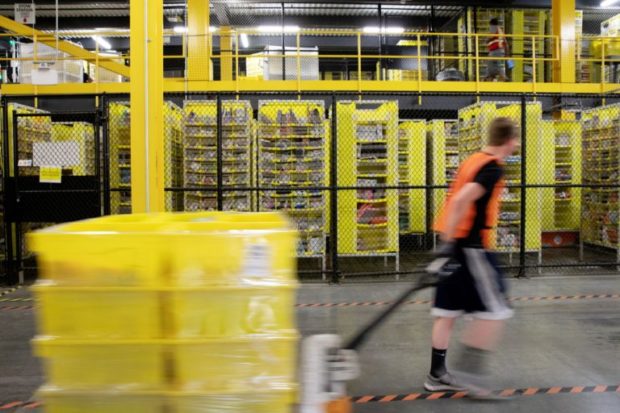Amasdfdfdfdfdfcompany’s progress. But internal data revealed that not only did Amazon fail to meet its own targets, but that the injury rate ticked up.
Amazon told workers the robots would make their jobs easier, Reveal reported, but instead automation prompted the company to jack up the number of products workers handled each shift. For instance, workers in traditional warehouses were expected to grab and scan about 100 items per hour, the report said. Workers in robotic fulfillment centers, meanwhile, were expected to reach as many as 400 items an hour.
“If you’ve got robots that are moving product faster and workers have to then lift or move those products faster, there’ll be increased injuries,” Kathleen Fagan, a medical officer for the federal Occupational Safety and Health Administration (OSHA), told Reveal.
In 2015 OSHA issued a hazard alert letter citing a robotic Amazon warehouse in New Jersey. It said: “The company exposed employees to ergonomic risk factors including stress from repeated bending at the waist and repeated exertions, and standing during entire shifts up to 10 hours, four days a week and sometimes including mandatory overtime shifts.”
The federal agency recommended solutions such as mandating extra rest breaks or rotating employees to different tasks but Amazon still prioritized productivity over safety, the report said. By the end of 2016, the company’s robotic warehouses had higher rates of injuries than traditional ones.
An Amazon spokesperson told Reveal the company values employee safety. “Nothing is more important than the health and safety of our teams. So far in 2020, we have committed over $1B in new investments in operations safety measures, ranging from technology investments in safety to masks, gloves, and the enhanced cleaning and sanitization required to protect employees from the spread of Covid-19,” spokesperson Rachael Lighty said.
After Reveal’s article was published, Amazon denied misleading the public about its injury rates. “We strongly refute the claims that we’ve misled anyone,” Lisa Levandowski, an Amazon spokesperson, wrote in an emailed statement. She also said Reveal mischaracterized the safety metric, and that the documents the news organization obtained demonstrated that “we have a deep focus on the safety of our teams.”
–With assistance from Matt Day.
Top Photo: An employee pulls a pallet jack carrying plastic crates past goods in storage units at the Amazon.com Inc. fulfillment center in Robbinsville, New Jersey, U.S. Photographer: Bess Adler/Bloomberg





















 First Atlantic Hurricane Forecast for 2026 Suggests Season Close to 30-Year Norm
First Atlantic Hurricane Forecast for 2026 Suggests Season Close to 30-Year Norm  What to Expect in 2026: U.S. P/C Results More Like 2024
What to Expect in 2026: U.S. P/C Results More Like 2024  Good Times for U.S. P/C Insurers May Not Last; Auto Challenges Ahead
Good Times for U.S. P/C Insurers May Not Last; Auto Challenges Ahead 








